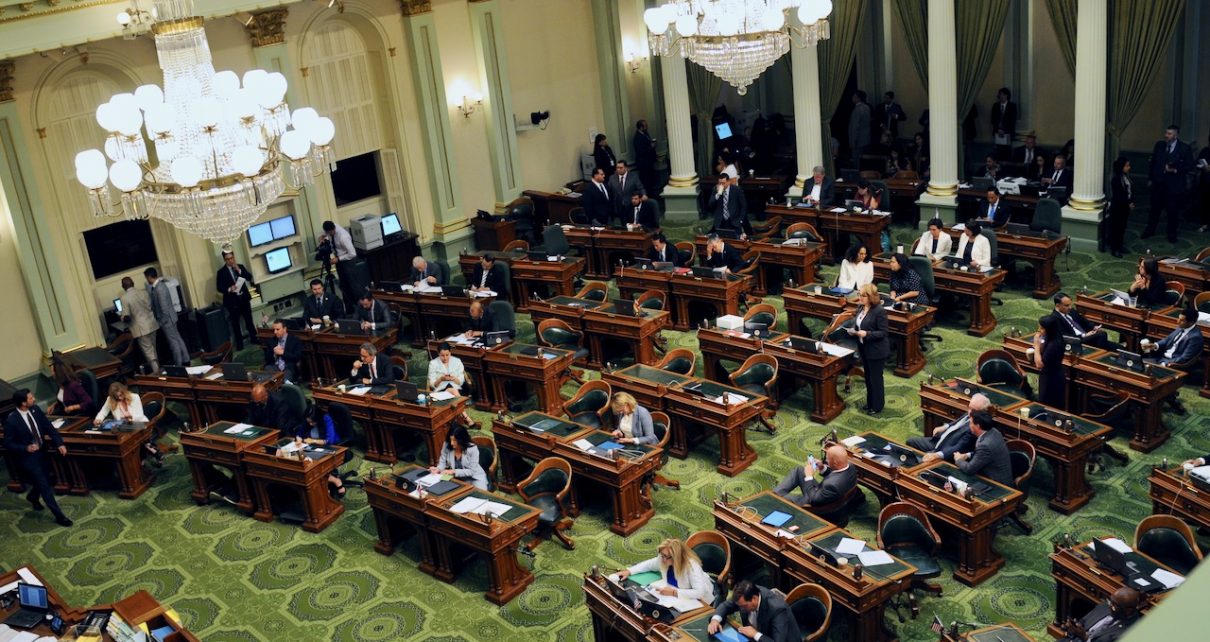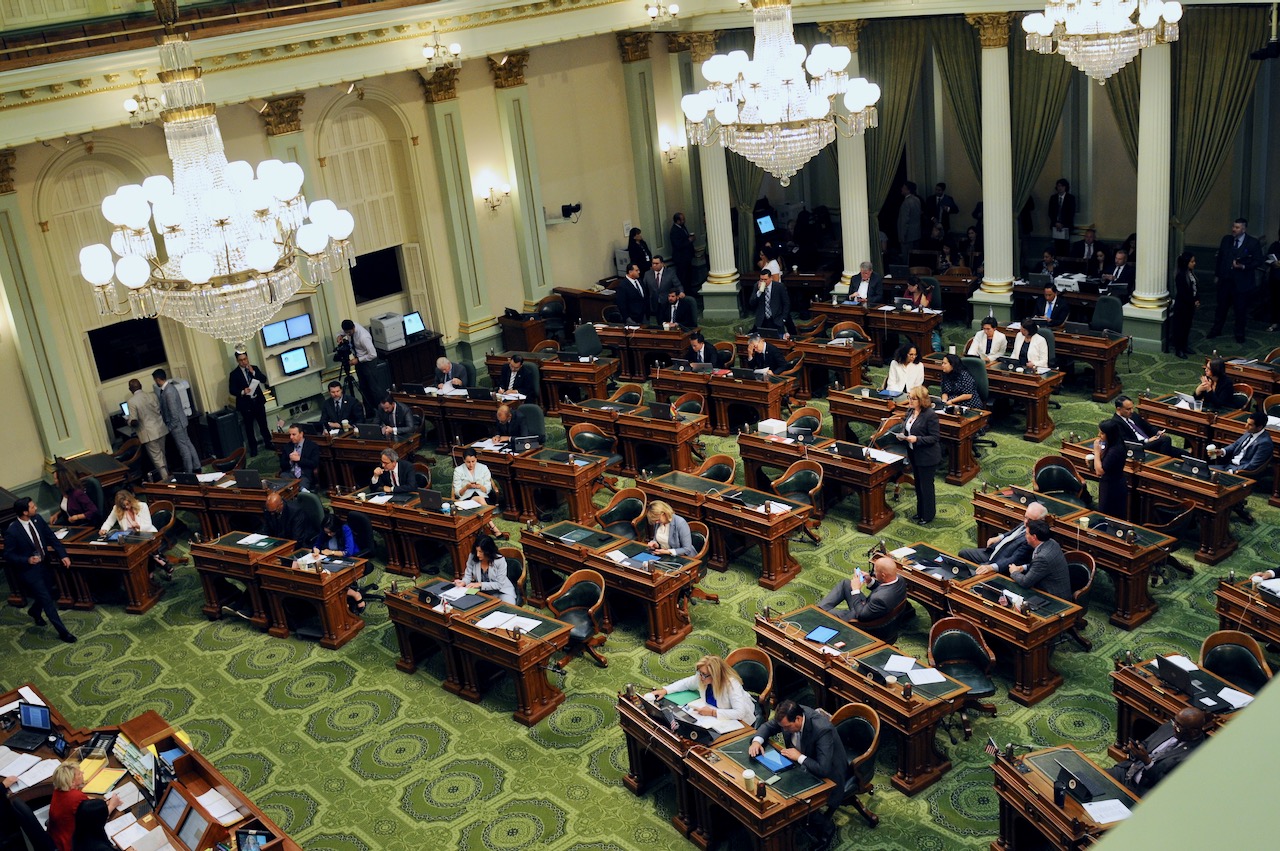
California State Assembly Chamber. (Photo: Kevin Sanders for California Globe)
Legislative Rules and Procedures by Statute
Procedures of the California Legislature
By Chris Micheli, January 17, 2020 6:12 am
In California’s Government Code, there are several code sections that set forth legislative rules and procedures. These statutes were added by Proposition 24 in 1984 and are found in Title 2, Division 2, Part 1, Chapter 8, Article 3. The provisions of law are summarized below:
Rules – Gov’t Code Sec. 9920
Each house of the Legislature must adopt rules for its proceedings for each regular and special sessions. This is done by resolutions adopted by an affirmative recorded vote of two-thirds of the membership of the respective house. No Assembly or Senate rule can be amended except by resolution adopted by an affirmative recorded vote of two thirds of the Members of that house.
Any standing rule of either the Assembly or Senate may be suspended temporarily by an affirmative vote of two thirds of the Members of that house present and voting. Any temporary suspension can apply only to the matter under immediate consideration.
Joint Rules – Gov’t Code Sec. 9921
The Senate and Assembly are required to adopt rules for their joint proceedings for each regular and special sessions. This is done by resolution adopted by an affirmative recorded vote of two thirds of the membership of each house. No joint rule may be amended except by resolution adopted by an affirmative recorded vote of two thirds of the membership of each house.
The Senate and Assembly may provide for temporary suspension of a joint rule by a single house upon the affirmative recorded vote of two thirds of the members of that house. Any temporary suspension can apply only to the matter under immediate consideration.
Standing Committees – Gov’t Code Sec. 9922
All standing committees of both the Senate and the Assembly, except the Senate Committee on Rules and the Assembly Committee on Rules, must be created and the size and jurisdiction of each is established through the adoption of or amendment to the rules of the respective houses by resolution with two thirds of the membership of the house in question concurring in the adoption of the resolution. The standing committee membership must be determined in the specified manner.
Special and Select Committees – Gov’t Code Sec. 9923
No special or select committees nor any subcommittee is allowed to be established in either the Senate or the Assembly except by affirmative vote of two thirds of the Committee on Rules of the house in question. Membership of special or select committees or subcommittees is determined by a two third vote of the membership of the house in question.
Joint Committees – Gov’t Code Sec. 9924
No joint committee can be established except by passage of a concurrent resolution with two thirds of the membership of each house concurring. The membership of each joint committee is to be allocated equally between the Senate and the Assembly and the delegation from each house are chosen pursuant to Section 9922.
Member Voting – Gov’t Code Sec. 9925
Each house of the Legislature must provide in its rules for appropriate voting procedures on the floor and in committees or subcommittees. However, no Member is allowed to cast a vote for another Member, nor may any Member be allowed to change his or her vote or add a vote to the roll after the vote is announced without the consent of four fifths of the membership of the house, nor may any vote be taken in any committee or subcommittee of either house in the absence of a quorum.
- California Department of Child Support Services - December 24, 2025
- Mistakes in Legal Pleadings - December 23, 2025
- The Division of Property Concerning Retirement Plan Benefits - December 23, 2025



